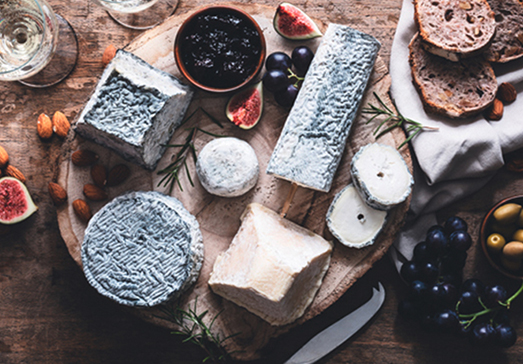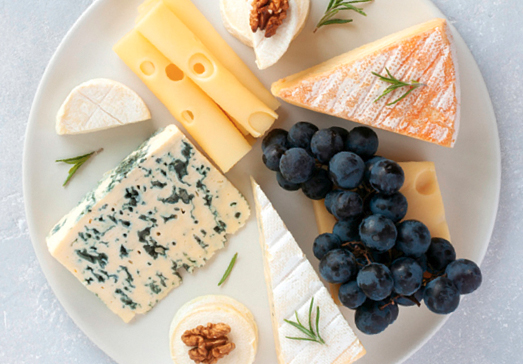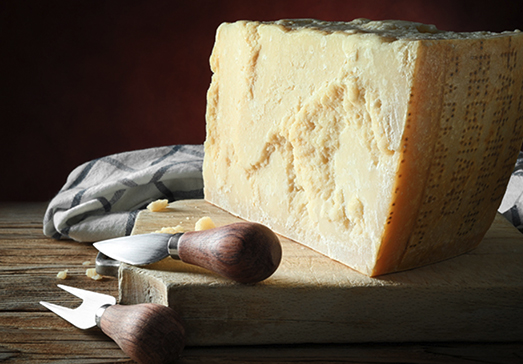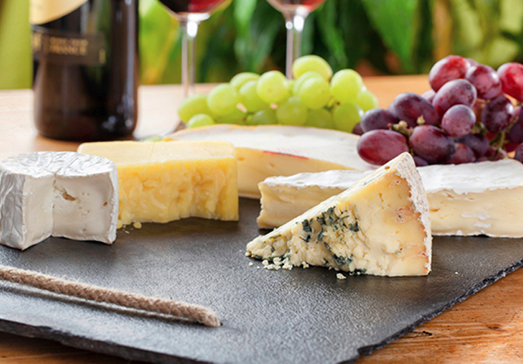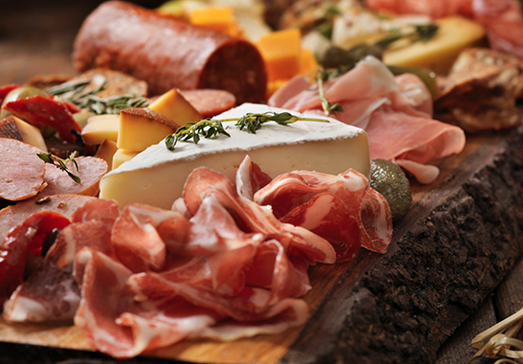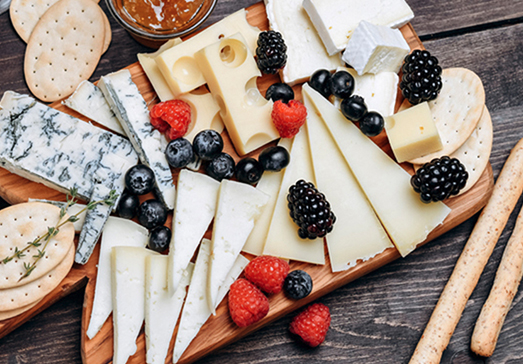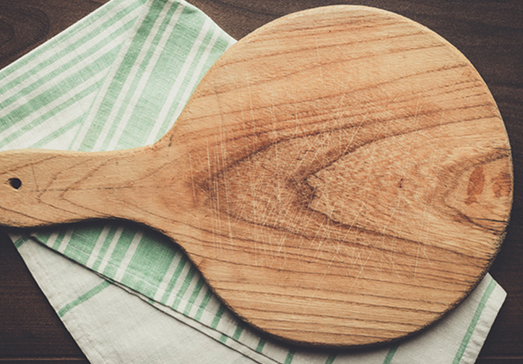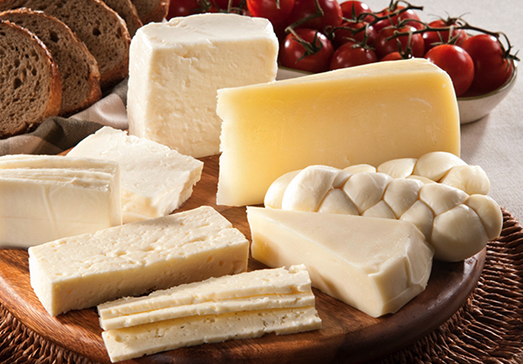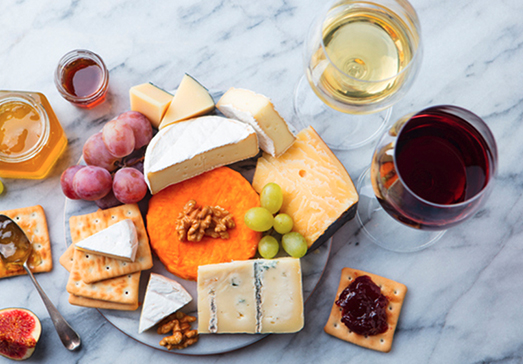Cheese rinds are like little flavour bombs and should be part of your overall cheese-eating experience. Most rinds are edible and actually give the cheese its distinct aroma and flavour.
Rinds you can eat:
Washed rind: Washed rinds are cheeses that are gently bathed in a saltwater wash with added cultures. This goes for classic cheeses like Chaussée aux Moines, Munster, Reblochon and Vacherin.
Bloomy rind: This type of rind is popular among soft-ripened cheeses. Bloomy rinds are made from a perfect marriage of mold and yeast, which creates a flavour-packed edible crust that helps soft cheeses like Brie and Camembert to ripen and gives them their rich, creamy texture.
Rinds you can slice off:
Wax rind: Think of a waxed rind like wrapping paper—you need to peel off the rind to get to the delicious cheese hiding inside. This goes for semi-firm cheeses like Gouda, which are often dipped in a wax casing to protect the cheese as it ages.
Bandaged-wrapped rind: Sometimes you’ll find that aged cheeses like extra-strong cheddars come wrapped in cloth. Make sure to remove it before digging in.
Natural rind: This type of rind is formed organically by aging the cheese in a temperature-controlled room where the rind is left to dry out until it naturally forms a tough outer layer. Natural rinds like the one found on Parmesan make great flavour boosters in cooking but are a little too hard to eat straight up.








